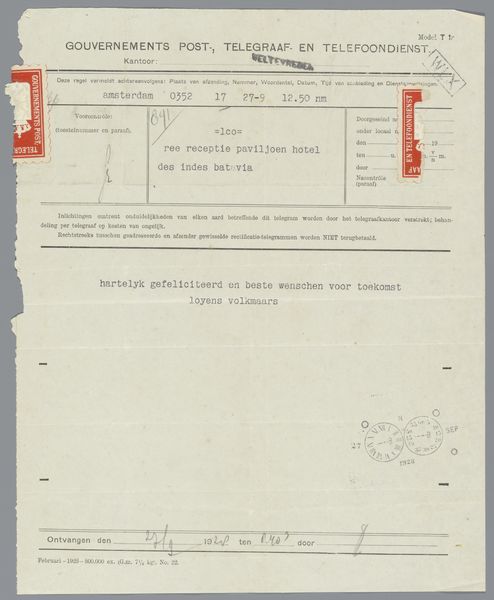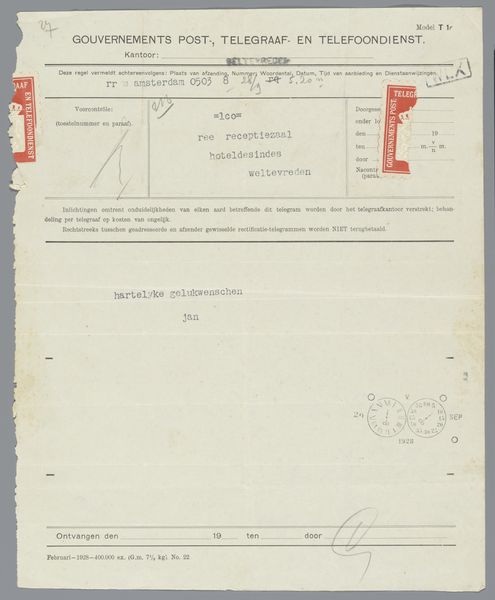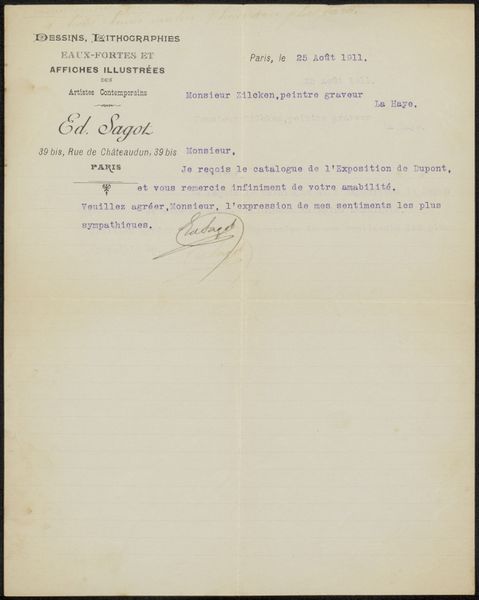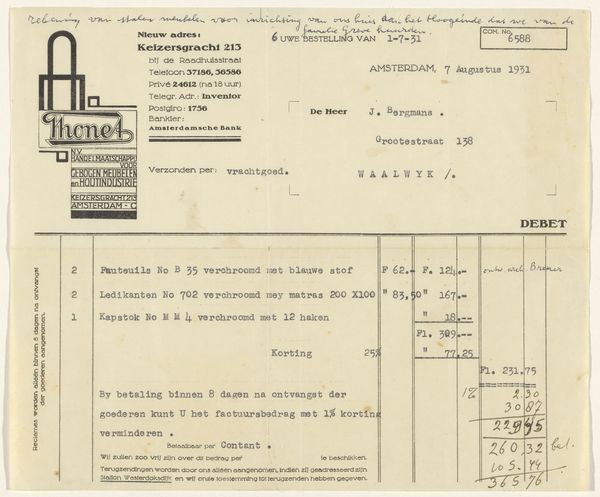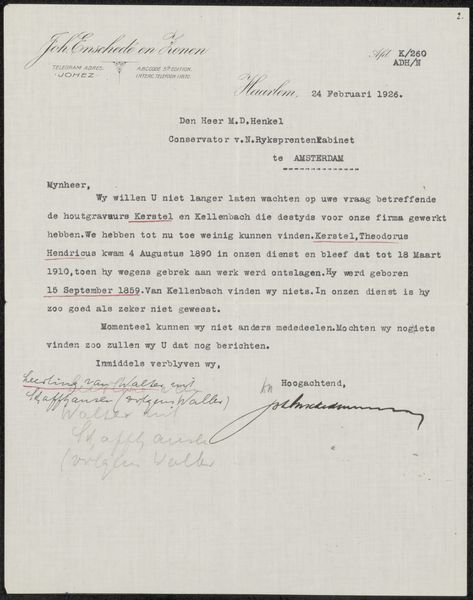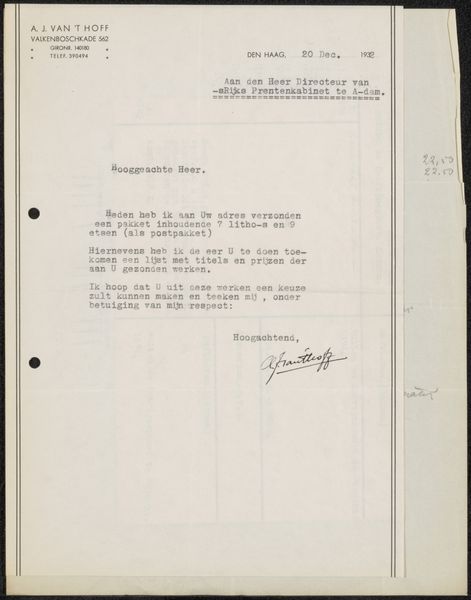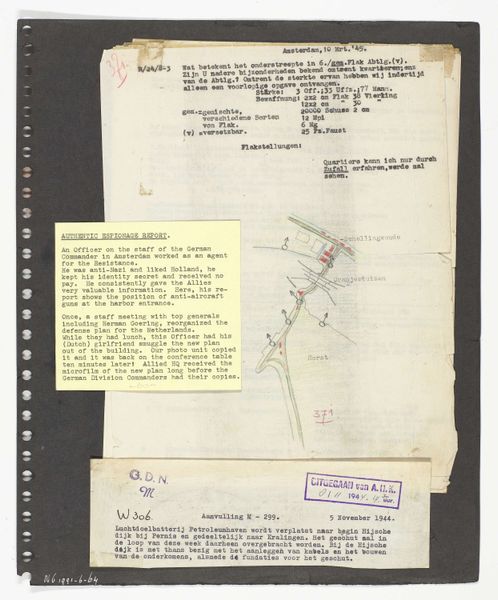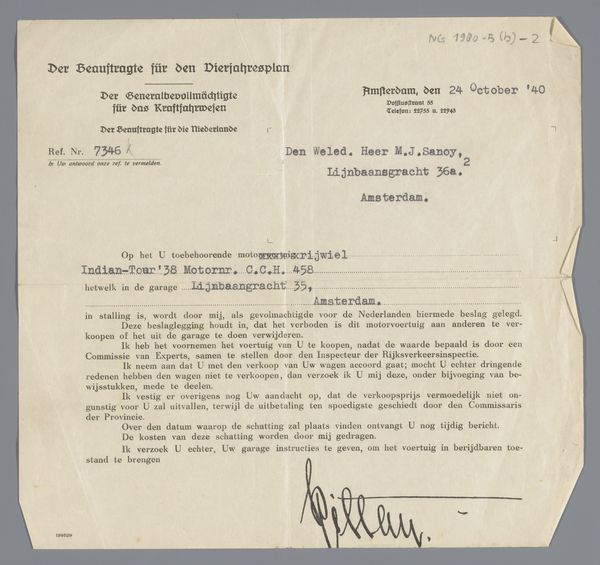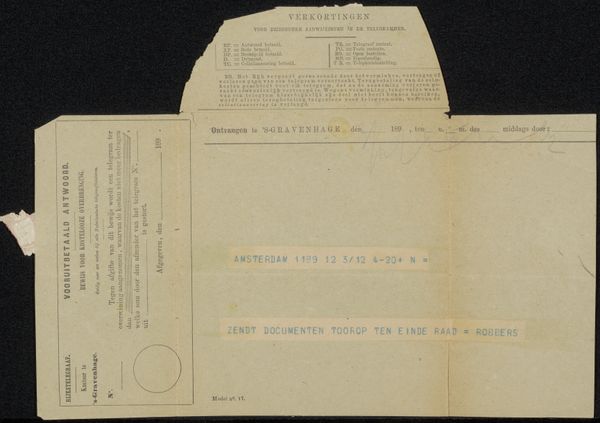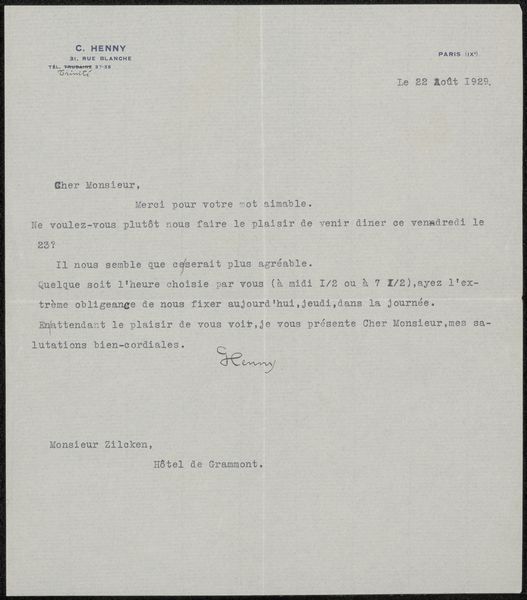
print, paper, photography
#
aged paper
#
vintage
# print
#
design document
#
paper
#
archive photography
#
photography
Dimensions: height 288 mm, width 233 mm
Copyright: Rijks Museum: Open Domain
Curator: This fascinating archival piece from 1928 is titled "Telegram met gelukwensen" – or "Telegram with congratulations". Editor: My first impression is the stark, almost clinical, layout combined with visible wear and tear – it creates a strange sense of immediacy for such a historic artifact. It really speaks to the formality of communication back then, while still conveying a celebratory message. Curator: Absolutely. As a design document and piece of postal history, it's incredibly informative about early 20th century governmental communication and the postal system, in particular. Consider how a telegram was a primary method to share important messages, with state institutions controlling those networks. Editor: Focusing on the visual rhetoric of this particular document, you immediately notice the repeated stamp motif featuring stylized depictions of technology intertwined with governmental authority. Even something like the rounded typeface for “Gouvernements Post” evokes a sort of modern efficiency, quite self-consciously projecting power and legitimacy. Curator: Indeed, every element had to reinforce state power and stability to a public who might well still have fresh memories of social upheaval during the early twentieth century. Notice that it mentions the "Weltevreden" which translates to Well Content; in that respect, a state body extending it in their telegraph design is both highly significant and rather telling about the era's mentality. Editor: That little detail completely alters my perception! The telegram is indeed offering “oprecht hulde” (sincere tribute), likely tied to some milestone relating to social stability and advancement; seeing the design essentially acting as visual propaganda highlights how the personal and political were so deeply entangled back then. It seems as if an apparatus to offer praise for citizens who reached "a good standard of living". Curator: Yes! It's this combination of functionality, communication and propaganda we ought to examine more closely when thinking of governmental history as social history. It reminds me how critical sources such as these are to explore this relationship. Editor: Definitely, seeing how design choices are actively shaping societal perception—even via congratulations—really grounds our understanding of power structures within past culture. I shall carry that with me, thank you.
Comments
No comments
Be the first to comment and join the conversation on the ultimate creative platform.
